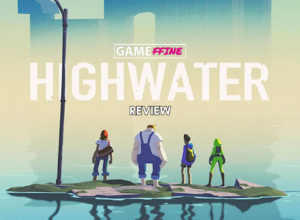There are few things cooler than a blade-wielding 8-year-old on rollerskates. Said 8-year-old is Kim, the protagonist of Keen: One Girl Army. Developed by Cat Nigiri, an indie game studio based in Brazil, and published by Phoenixx & 2P Games, Keen is a sliding puzzle game with turn-based combat, making it perfect for players who love the tactics genre.
As someone whose experience with puzzle games has been limited to the Professor Layton series and prefers more action-oriented games, I’ll admit I wasn’t as keen to pick up what I initially thought was an average brain puzzler. However, my expectations were surpassed despite the game’s limitations.
Story and Narrative
At the start of the game, we’re introduced to Kim, the grouchy main character, and her grandmother and trainer in the art of combat. After bypassing the training in the dojo, word reaches that Kim’s village is under attack. Going against her grandmother’s warnings, as well as her curfew, she decides to face the evil organization on her own. Thus, we see Kim unmask the face of tyranny, learn a few things about her past, and meet some very strange NPCs.

I’m a huge fan of the “overpowered little girls” trope so I took a liking to the pig-tailed protagonist very quickly. With such a quirky main character, I would have enjoyed seeing more characters (besides NPCs) introduced, maybe even a companion or two, but I guess the game isn’t titled One Girl Army for nothing.
While the story is relatively linear, and nothing to write home about, the general plot served its purpose to motivate me to try and get through each dungeon and onto the next as quickly as I could. Would Kim reach back to her village safely? What of her mother who was briefly mentioned once in the very beginning? As things slowly begin to unravel, you become a bit more invested in Kim’s story. There’s no deep lore about the set-up of the world or anything of the sort, in fact, the village is just named Village. It’s somewhat silly and oddly adds to the charm of the game. Folks looking for a gripping narrative best look elsewhere.
Gameplay and Mechanics
Upon grasping the mechanics and learning the basic controls of the game, I instantly thought back to my time playing the older Pokemon games and the ice dungeons within it. Movement is restricted to being either vertical or horizontal, and you can only stop if you hit a wall or an object in the room. Depending on where you land or how you move, you can either attack or be attacked. The combat is almost chess-like, as you strategize the best way to move about a level, and how to avoid taking damage.

What presents the game as a challenge even further, is the save point mechanism. In the modern-day of autosaves, I almost entirely forgot what the time of manual saves and checkpoints was like. I must say, I do not miss it. Keen features checkpoints, in the midst of certain levels, when you make adequate progress. At the beginning of the game, I found myself clearing dungeons with ease, on the very first try. However, as I played on, I found myself getting somewhat frustrated when I couldn’t figure out how to escape a particular level and would be back to square one upon losing all my health.
This leads to my other gripe, which was the lack of any form of in-game assistance. The nature of Keen is such that it requires you to think carefully. However, should you get stuck at any point, there aren’t any clues on how to progress further or what to do next. With games such as Celeste featuring an assist mode and direct control on gameplay variables, it’s a given that a puzzle-based game should feature hints at the very least.
This issue is somewhat lightened with the game’s collectible orbs. Upon gathering enough of them, the player can visit shrines. They’re somewhat hidden in the overworld, but the game explains their existence through the all-knowing NPC, Mr. Beaver. Upon successful completion of the dungeon, they’re granted special abilities such as increased attack power.

In terms of the length of the game, I averaged about 6 hours, which is not bad. For completionists or people seeking more of a challenge, there’s replay value in the form of trying to meet all the goals of a dungeon, such as making as little moves as possible, or getting through without dying.
Visuals and Sound
The art style of the game takes on a very cute 2D-cartoonish appearance, reminiscent of the many shows I used to watch as a kid. It seems befitting of the nostalgic vibe that the game gives off, and is very pleasing to look at.

I love a good original soundtrack, so the music of the game is what caught me the most. Initially, it’s a calming blend of traditional Japanese instruments and chiptunes, making it a treat for the ears. While progressing towards the more darker-themed dungeons, it changes into a more cyberpunk-esque track.
VERDICT
There’s something very satisfying about a tiny warrior defeating the embodiment of capitalism, and Keen does a good job of capturing that by rewarding progression. It’s not game-of-the-year material or a must-play indie gem, but it’s a neat little ode to gaming from a long-gone era.




